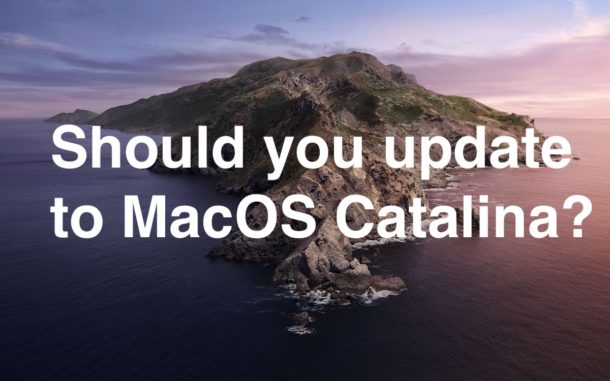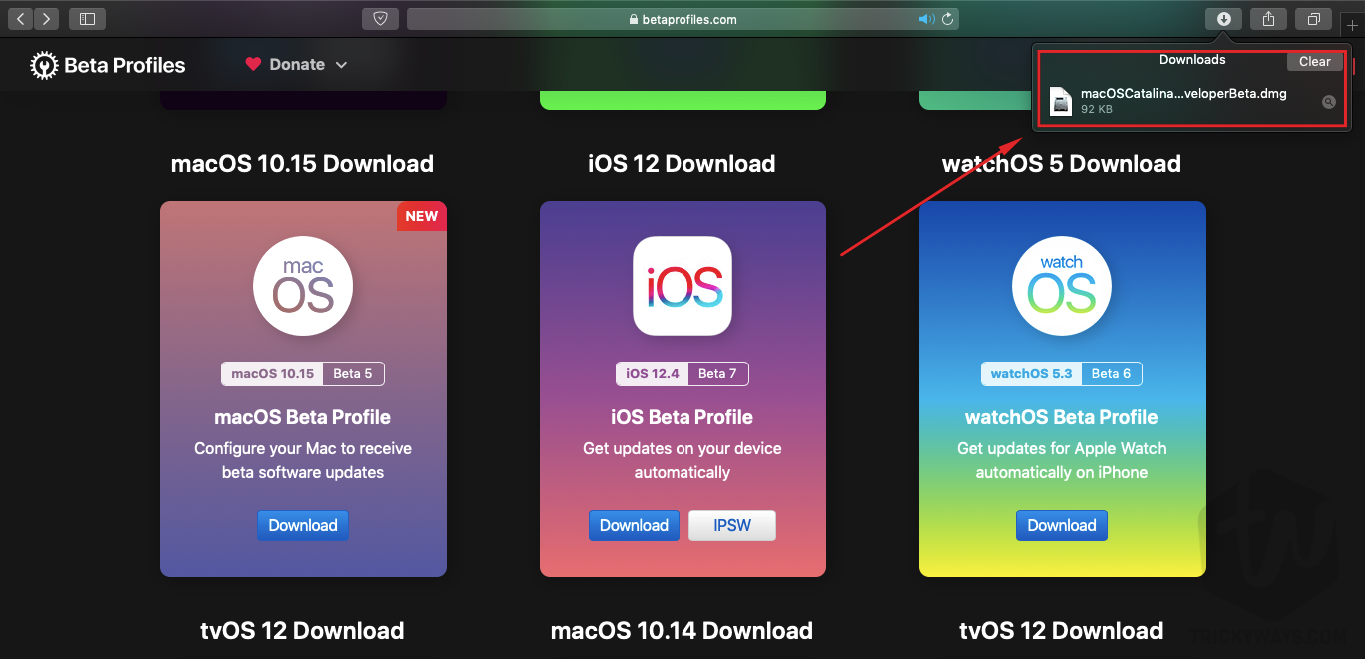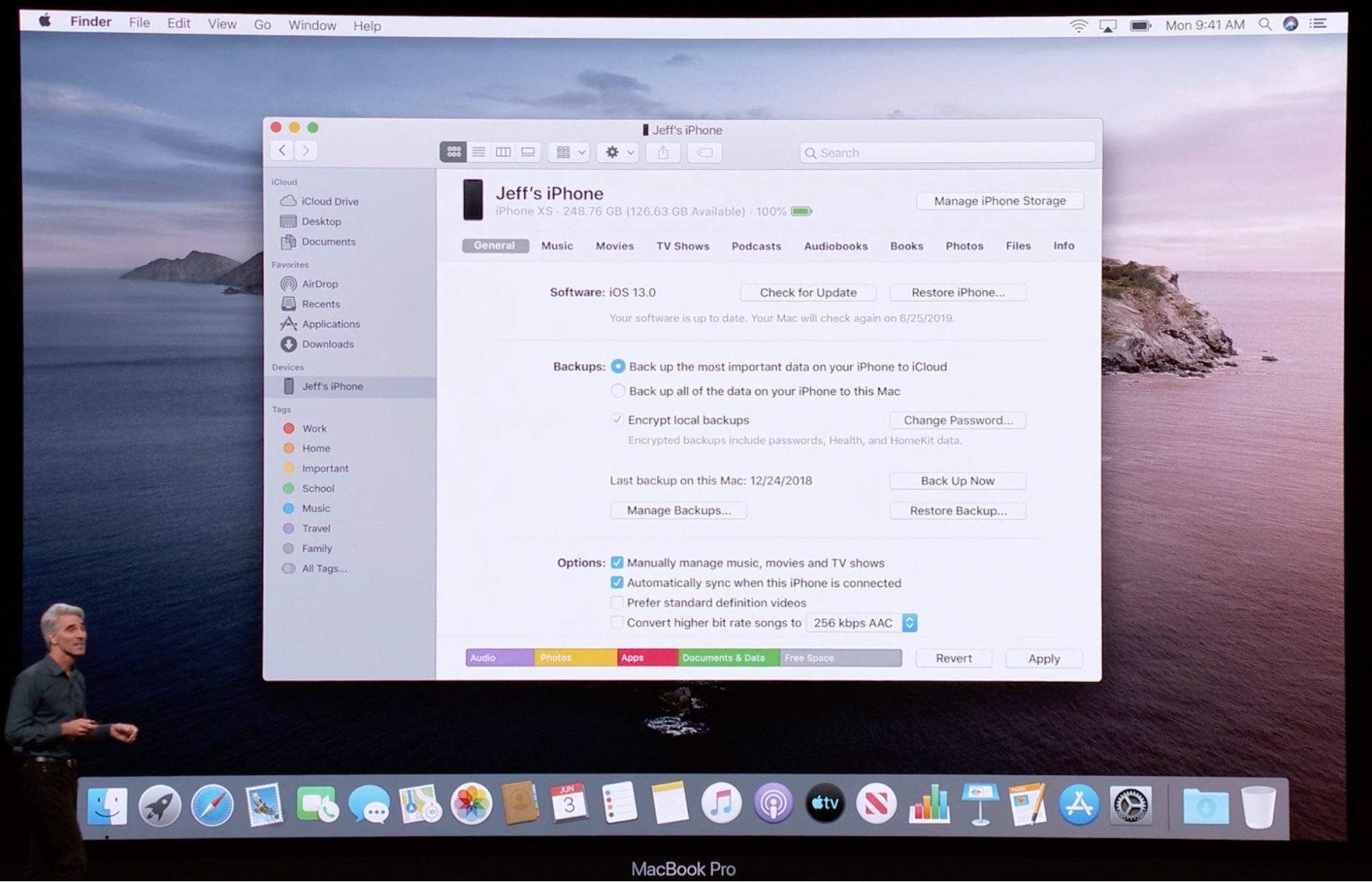Prior to the release of Catalina was macOS 10.14 Mojave. Version 10.14.6 arrived on 26 September 2019. (as an update to Snow Leopard) versions of Mac OS X and macOS have been available to. Very surprised how easy it was to migrate my working Catalina on Clover over to OC. With my system now working on OC 0.6.3, I created an OC Big Sur install USB, kicked off the install/upgrade, did the 3 or 4 reboots and that’s it. Successful Catalina/OC to Big Sur upgrade.
macOS Catalina was the newest operating system by Apple until macOS Big Sur succeeded it in 2020. If your Mac still runs Mojave or an even older macOS version, you'll be amazed by all the new features and improvements in Catalina. So here’s how to upgrade to macOS Catalina.
First, clear out the junk
When you do a regular upgrade, the installer replaces some files on your Mac with others, but leaves most untouched. That means that all the system junk your Mac has accumulated over the years stays there. And as you upgrade year after year, you accumulate more and more. As you can imagine, upgrading your operating system on a junk-filled Mac is rather like putting one layer of wallpaper on top of another — eventually you have to scrape it off and start again.
Likewise, it’s always a good idea to clear out the clutter before you upgrade. My recommendation, after years of experience upgrading Macs, is that you use CleanMyMac X. It’s very quick and easy to use and will get rid of clutter, making your Mac run more smoothly and freeing up tens of gigabytes of disk space. You can either let it decide what to remove or go through its scan results yourself and decide what to trash and what to keep.
Then, backup your Mac
As you will see below, there are a couple of different ways you can upgrade to Catalina, but before you decide, and certainly before you upgrade, you should make a full backup of your current Mac setup. Upgrading one OS on top of another carries very few risks, but they are not non-existent so be safe now rather than sorry later. If you use Time Machine you can make a backup with that. But the best idea is to make a complete bootable clone of your current startup disk on an external drive.
To clean install or not to clean install
Remember I said you had a couple of options for upgrading? Here they are:
- Regular install
- Clean install
A regular install places Catalina files on your startup disk over the top of whatever OS you’re currently running. It doesn’t overwrite anything else. So all your applications, documents, settings, photos, movies, and music stay where they are. Unfortunately, all the junk files your Mac has accumulated also remain there. This option is quicker in the short-term, but your Mac won’t run as smoothly in the long-term. If you choose this option, I’d definitely recommend you use CleanMyMac X to clear out the clutter, before you upgrade.
A clean install erases your startup disk completely and then installs macOS Catalina on a completely clean disk. It takes longer, but in the long run your Mac will run more quickly and more smoothly. You will have to clone your startup disk before you start, and then spend time reinstalling applications and setting them up afterwards, however.
How to do a regular install of macOS Catalina
- Check that your Mac can run Catalina. Here’s the list of compatible Macs:

MacBook 2015 and later
MacBook Air 2012 and later
MacBook Pro 2012 and later
IMac 2012 and later
IMac Pro 2017 and later
Mac Pro 2013 and later
2. Make sure you’re connected to the internet and have a reliable connection. If you’re using a MacBook, MacBook Air, or MacBook Pro, plug it into mains power.
3. Launch the App Store app on your Mac and search for 'macOS Catalina.'
4. When you find it, click 'Get.'
5. Wait for Catalina to download and when it’s ready to install, click Continue. Type in your admin username and password, if necessary.
6. Wait for Catalina to install. Your Mac will restart several times and it may take a while, so be patient! If you are using a laptop, don’t close the lid.
7. Once it has finished installing, you can continue to use your Mac as normal.
How to clean install macOS Catalina
We have covered clean installing Catalina in more detail in this article How to Clean Install macOS Catalina but here’s a summary.
- Make a full bootable clone of your Mac, just in case the worst happens.
- Grab a USB stick that’s at least 16GB capacity, or an external hard drive or USB stick.
- Erase and re-format the USB stick or external disk.
- Create a bootable installer on the disk.
- Boot from the new install disk and use Disk Utility in macOS Utilities to erase your startup disk.
- Go back to macOS Utilities and choose install macOS, with your startup disk as the location for the install.
Os X Mavericks Upgrade To Catalina
Once it’s finished, set up your Mac, reinstall applications and restore your settings.
My apps are slow or stopped working on macOS Catalina
Okay, you’ve successfully installed macOS 10.15 Catalina. But some of your apps are no longer available. That’s a heavy blow from macOS Catalina as it no longer supports 32-bit apps. According to Apple, 64-bit apps are more memory-efficient than 32-bit ones. But for most of us it means we will lose many favorite games and applications, including Photoshop CS. To minimize the damage, you should first check how many 32-bit apps you have. It's possible to do with the same Mac maintenance app we've mentioned above.
- Run CleanMyMac X — you can download a free edition here.
- Click the Uninstaller tab.
- Now, by clicking on the 32-bit tab, you will see the list of 32-bit apps on your Mac.

Next up, click the Updater tab.
Here you can update your 32-apps (and all the rest of apps) to newer versions. Many developers have already optimized their software for 64-bit architecture. With this method you’ll update all your software in one-go to make it Catalina-friendly. As you can see, I can update 17 apps with just one button.

Thanks for reading this article. Hope you will like it on Catalina!
Can I use my Adobe apps in macOS Catalina 10.15?
We've updated most current apps to 64-bit architecture. The following versions work in Catalina, but have these known issues.
| Adobe app | Version(s) compatible with Catalina |
|---|---|
| Adobe Creative Cloud apps | 2021 2020 |
| Acrobat Pro DC, Acrobat Standard DC | 2019 and later (subscription or non-subscription) |
| Adobe Acrobat Pro 2017, Adobe Acrobat Standard 2017 | 2017 |
| Adobe Acrobat Pro 2020, Adobe Acrobat Standard 2020 | 2020 |
| Adobe Connect | 11.2, 11 |
| Adobe Digital Editions | 4.5 |
| Adobe Photoshop Elements | 2021 2020 |
| Adobe Premiere Elements | 2021 2020 |
Most older Adobe apps were created using 32-bit architecture and do not work in Catalina. We have no plans to update apps that we no longer support or develop. The following table lists some common 32-bit Adobe apps that are not compatible with Catalina. (It is not a comprehensive list of all older 32-bit Adobe apps.)
Os X Upgrade To Catalina
| Adobe Product | Status and alternatives |
| Creative Cloud apps – 2018 release and earlier | No updates planned. We recommend that you upgrade to the latest release of Creative Cloud apps. |
| Adobe Captivate | Update scheduled end of 2019 |
| Creative Suite apps | No updates planned. We recommend that you upgrade to Creative Cloud. |
| Fuse | No updates planned. Find free characters on Mixamo. |
| Adobe Presenter Video Express | No updates planned. We recommend moving to Adobe Captivate. |
| SpeedGrade | No updates planned. Certain features have been integrated into Premiere Pro, which is 64-bit compliant. |
Uninstall 32-bit apps before upgrading to Catalina
Before you upgrade to Catalina, we recommend that you uninstall your 32-bit Adobe apps. Older uninstallers are also 32-bit apps and don't work in Catalina.
If you already upgraded to Catalina, you can use the Creative Cloud Cleaner tool to uninstall older versions of Creative Cloud apps.
If you've kept Acrobat DC or Creative Cloud apps up to date, they are already 64-bit compliant.
You can update your apps using the Creative Cloud desktop app. See how to update your apps to the latest versions.
Upgrade To Os X Catalina
Are there issues using current Adobe apps in Catalina?
See the following documents for known issues with Adobe apps and macOS Catalina:
- Enterprise: Known issues with Creative Cloud packages on macOS Catalina



